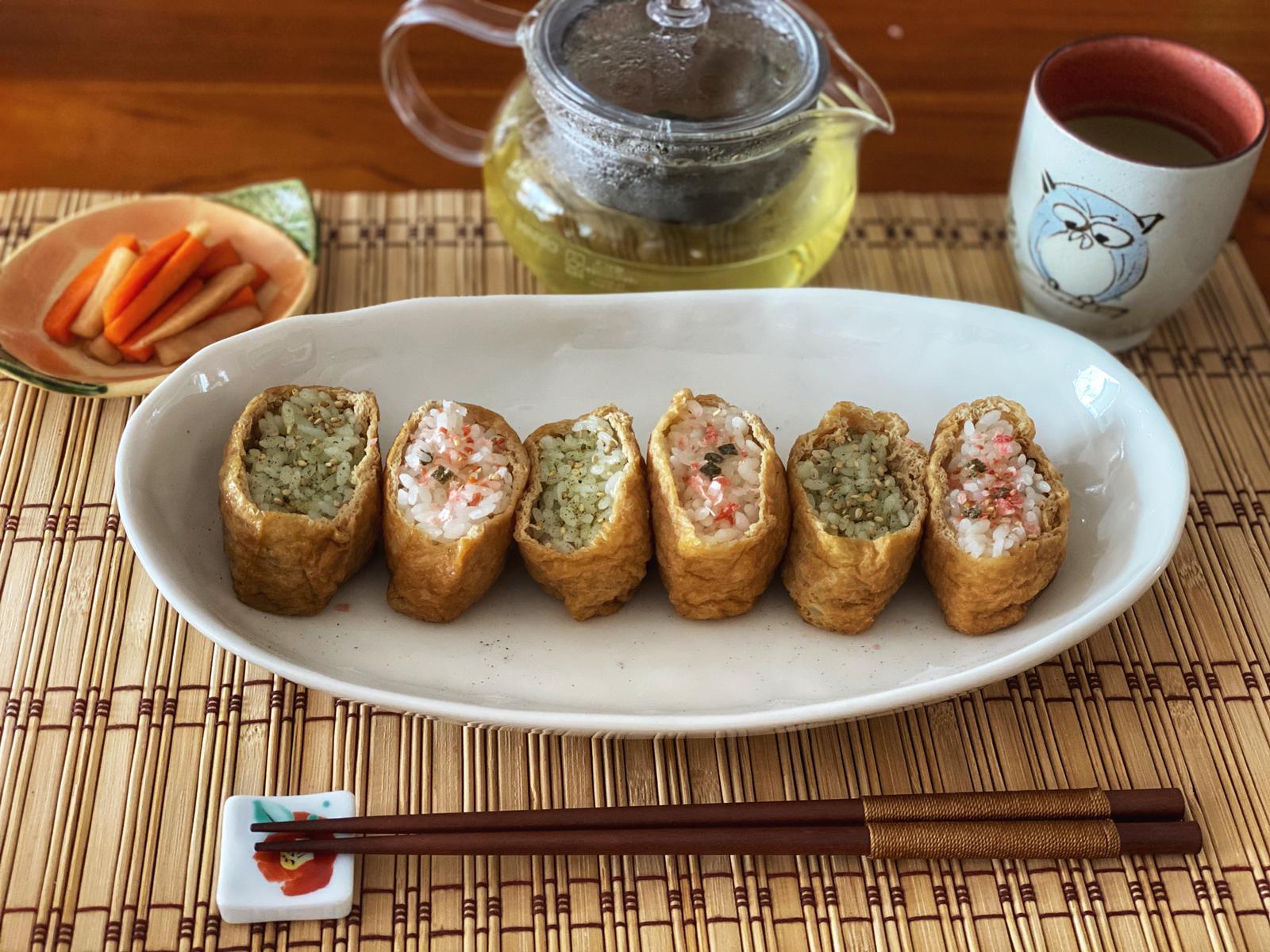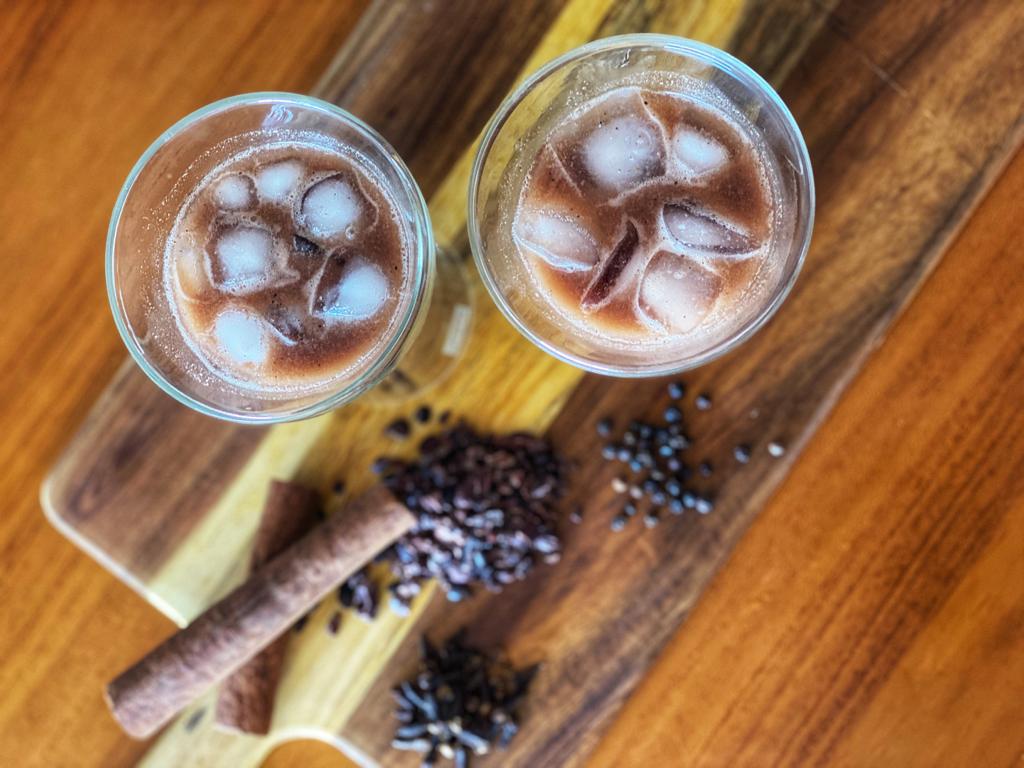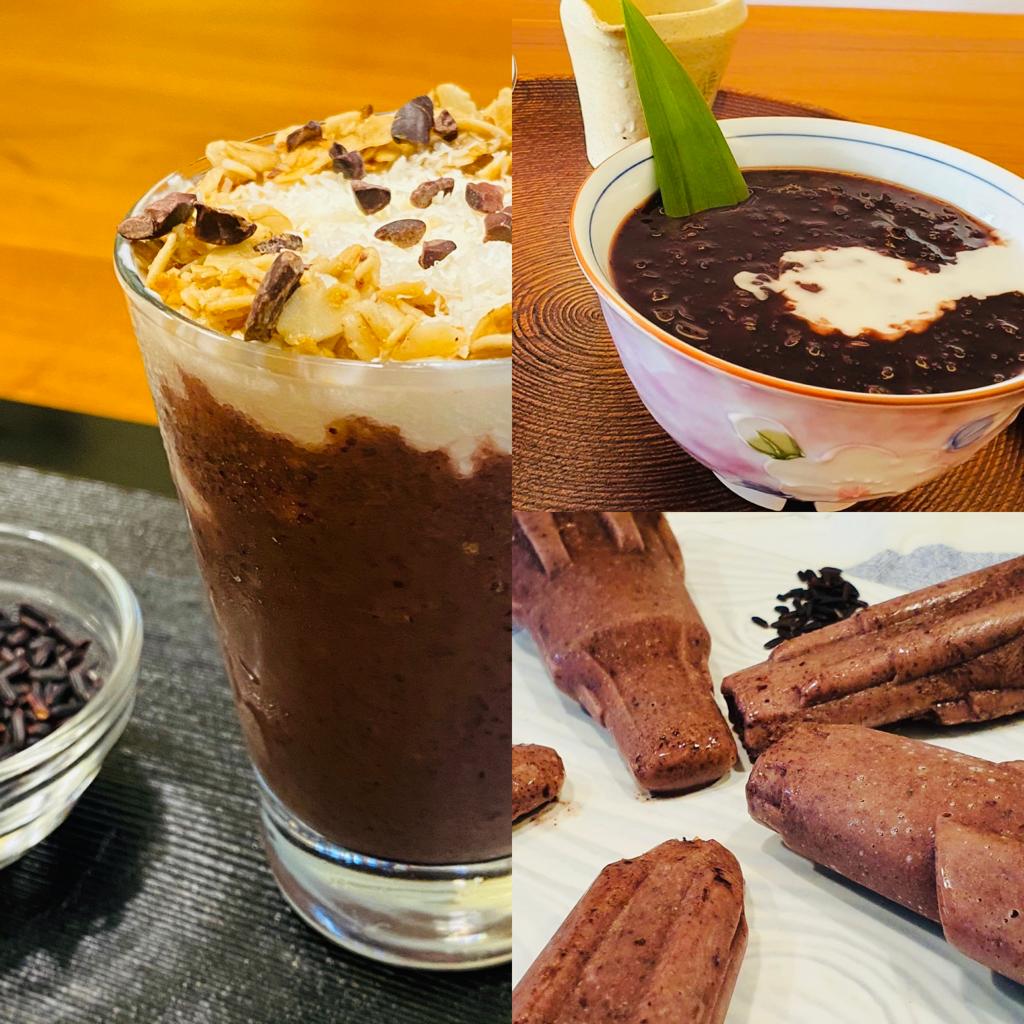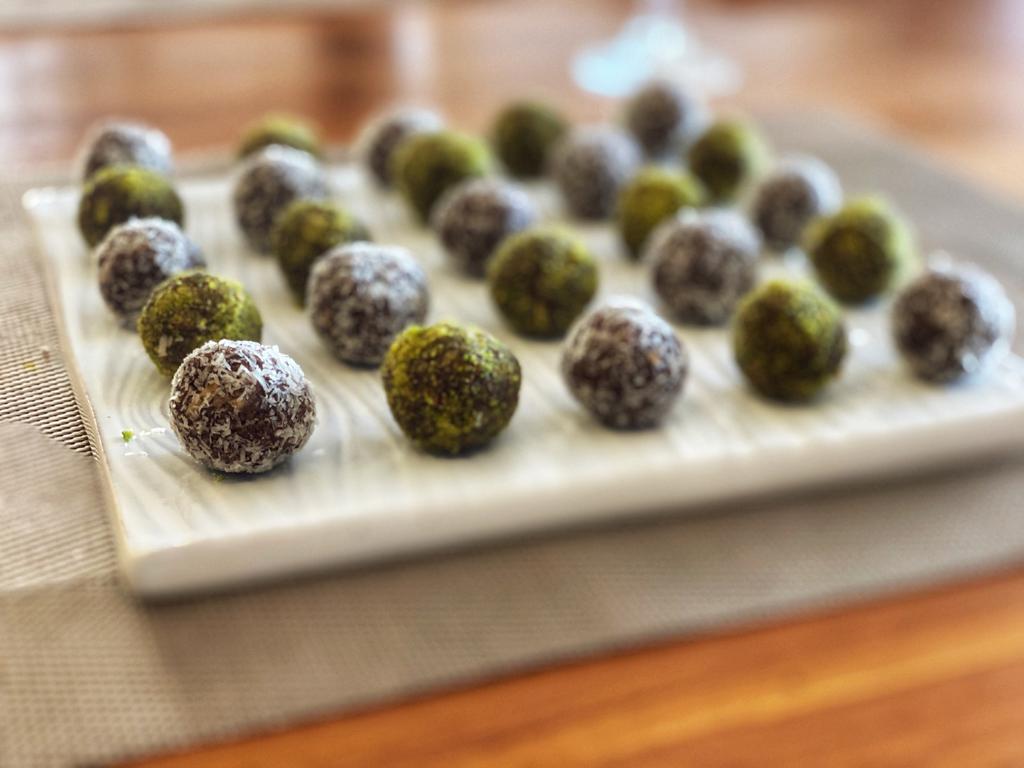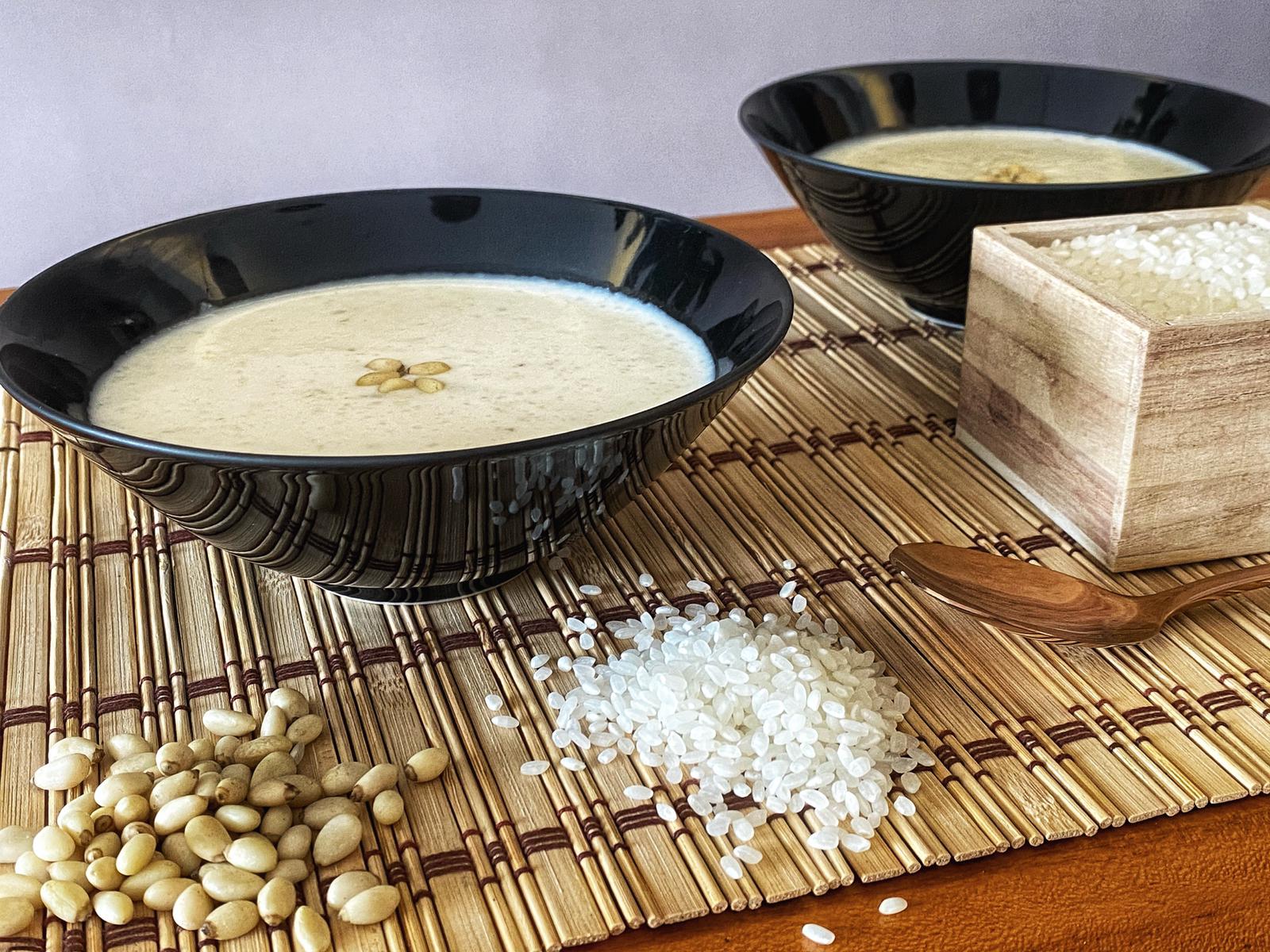Legend has it that Inari, the Japanese Shinto god of harvests, uses foxes as his messengers. It is believed that these messenger foxes enjoy eating fried tofu skin, which gave birth to the popular snack inarizushi (fried tofu pockets stuffed with rice).
Often used as an offering at the altar of Inari shrines, the shape of inarizushi is either rectangular (eastern Japan) to represent rice bags offered at Inari shrines, or triangular (western Japan) to represent a fox’s ear.
With flavoured salts, you can put a fun spin while adding some colour to the traditional inari!
What you’ll need
(4 servings)
For Sushi Rice:
- 2 1/2 cups short-grain rice
- 560ml water
- 2-inches konbu kelp
- 2 tbsps white sesame seeds
- 5 tbsps rice vinegar
- 2 tbsps sugar
- 1/2 tsp flavoured salt of your preference (e.g. for matcha salt, use 1 part matcha powder to 3 parts salt)
For Inari pockets:
- 10 fried tofu puffs (aburaage)
- 4 tbsps soy sauce
- 4 tbsps sugar
- 2 tbsps mirin
- 1 cup water
How to make it
Sushi Rice:
- Wash the rice and drain in a sieve for 30 minutes
- Place the drained rice, water and konbu kelp in a pot or rice cooker, and cook the rice.
- Heat the vinegar briefly then combine with sugar and salt.
- Place cooked rice in a large bowl and spread. Pour seasoning over rice and mix in gently or thoroughly, while fanning the rice to evaporate excess moisture. Sprinkle sesame seeds over rice and set aside to cool.
Inari Pockets:
- Immerse fried tofu puffs (aburaage) in boiling water, drain and squeeze out excess water.
- Cut them into two width wise and open up the middle so they become pockets.
- Combine soy sauce, sugar, mirin and water in a saucepan, and simmer over medium-low heat for 10 minutes or until the liquid disappears. Set aside to cool.
- When the rice is cool, shape into balls and stuff into inari pockets.
- Serve with Japanese pickles. Itadakimasu!


